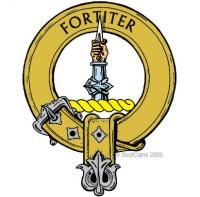
Clan MacAlister
Asserting themselves as independent of the main Clan Donald early in the 13th century, the MacAlisters were one of the earliest to do so. They are believed to be descended from Alisdair Mór, second son of Donald, Lord of the Isles, and younger brother of Angus Mór.
By 1366 the Chief of the Clan MacAlister was Ranald, son of Alexander, who lived in Kintyre in an area called Lowb, later Loup. Lowb was the Gaelic word describing the area’s curving shoreline.
In 1481 Charles MacAlister became the Constable of the Castle of Tarbet, built by Robert the Bruce, receiving more Kintyre lands with the post. James IV kept naval supplies in the castle when dealing with the disobedient Lords of the Isles.
Although the Clan Alister had influence, they did not have great numbers and formed alliances with other clans to pool resources should the need arise. The Earl of Argyll gave the family a charter relating to the Tarbet lands and over the following two centuries a successful branch of the family of Tarbet grew.
Similar land acquisition and fruitfulness occurred in Arran and Bute.
In 1598 Godfrey MacAlister murdered Charles MacAlister, his tutor and guardian, then besieged the man’s sons in their home at Askomull. Two years later MacAlisters invaded Arran to plunder and seize everything of John Montgomery of Skelmorlie, including £12.49,000-Scots worth of possessions. Another two years after that Archibald MacAlister exacted similar outrage across the Isle of Bute with over twelve hundred men.
The Stewarts were the victims this time.
The next year Archibald and Angus Og of the MacDonalds of Islay were accused of being rebels, charged with treason, imprisoned in Edinburgh’s Tollbooth, then hanged.
By 1706 the House’s Tarbet lands had passed to the MacLeans while, from the flourishing Loup family, Duncan MacAlister made his way to Holland in 1717. There, he established himself as a great officer and through him the name continues in Northern Europe.








